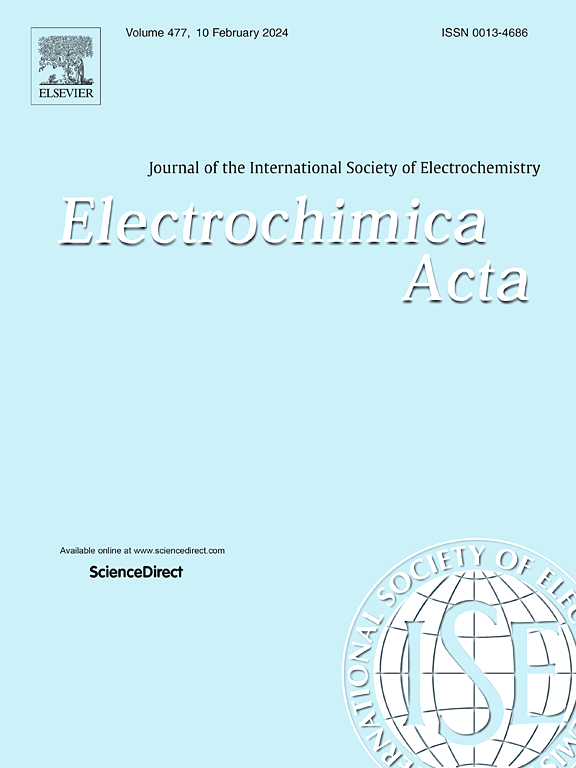Hollow carbon fiber supported MoS2 nanosheets composite for reliable sulfur electrochemistry
IF 5.5
3区 材料科学
Q1 ELECTROCHEMISTRY
引用次数: 0
Abstract
The structural modification of sulfur hosts plays a pivotal role in addressing the current challenges encountered by lithium-sulfur batteries (LSBs), including severe shuttle effects, slow redox reactions, and volume expansion. In this research, we synthesize a novel hollow "tube-in-tube" carbon fiber support (CNT@HCNF) through electrospinning followed by a carbonization process. On this basis, molybdenum disulfide (MoS2) nanosheets are uniformly deposited on the internal and external surfaces of the CNT@HCNF via a hydrothermal synthesis strategy to form a novel composite cathode material designated as CNT@HCNF@MoS2. The interwoven CNT@HCNF enhances the conductivity and offers sufficient sulfur storage space, while the in-situ generated MoS2 further improves the specific surface area with a large number of catalytic active sites. This particular structural design promotes the adsorption of soluble long-chain polysulfides, and accelerates the migration rate of lithium ions, effectively alleviating the aforementioned issues. Owing to its unique structure and the intrinsic properties of robust adsorptive and catalytic capabilities towards soluble polythionates, CNT@HCNF@MoS2/S electrode exhibits a high large discharge capacity of 1176 mAh·g-1 at 0.2 C, with a retention capacity of 733 mAh·g-1 (2.0 C) after 250 cycles.


中空碳纤维支撑二硫化钼纳米片复合材料可靠的硫电化学
硫载体的结构修饰在解决锂硫电池(LSBs)面临的挑战中起着关键作用,包括严重的穿梭效应、缓慢的氧化还原反应和体积膨胀。在这项研究中,我们通过静电纺丝和碳化工艺合成了一种新型的中空“管中管”碳纤维支架(CNT@HCNF)。在此基础上,通过水热合成策略将二硫化钼(MoS2)纳米片均匀沉积在CNT@HCNF的内外表面,形成新型复合正极材料CNT@HCNF@MoS2。交织的CNT@HCNF提高了电导率,提供了足够的硫存储空间,而原位生成的MoS2进一步提高了比表面积,具有大量的催化活性位点。这种特殊的结构设计促进了可溶性长链多硫化物的吸附,加快了锂离子的迁移速度,有效缓解了上述问题。由于其独特的结构和对可溶性多硫酸盐的吸附和催化能力,CNT@HCNF@MoS2/S电极在0.2 C时具有1176 mAh·g-1的大放电容量,在250次循环后具有733 mAh·g-1 (2.0 C)的保持容量。
本文章由计算机程序翻译,如有差异,请以英文原文为准。
求助全文
约1分钟内获得全文
求助全文
来源期刊

Electrochimica Acta
工程技术-电化学
CiteScore
11.30
自引率
6.10%
发文量
1634
审稿时长
41 days
期刊介绍:
Electrochimica Acta is an international journal. It is intended for the publication of both original work and reviews in the field of electrochemistry. Electrochemistry should be interpreted to mean any of the research fields covered by the Divisions of the International Society of Electrochemistry listed below, as well as emerging scientific domains covered by ISE New Topics Committee.
 求助内容:
求助内容: 应助结果提醒方式:
应助结果提醒方式:


